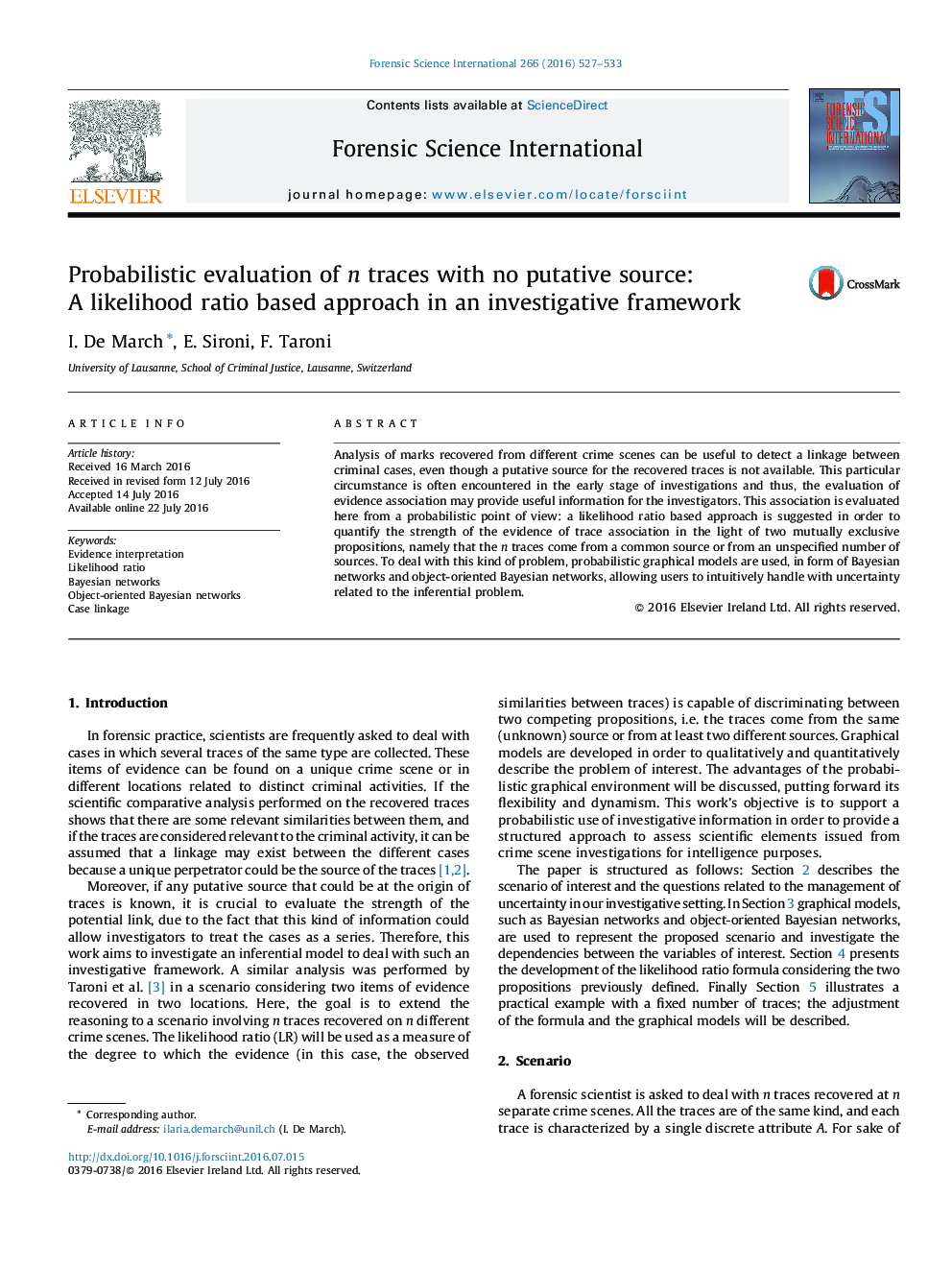| کد مقاله | کد نشریه | سال انتشار | مقاله انگلیسی | نسخه تمام متن |
|---|---|---|---|---|
| 6551663 | 160412 | 2016 | 7 صفحه PDF | دانلود رایگان |
عنوان انگلیسی مقاله ISI
Probabilistic evaluation of n traces with no putative source: A likelihood ratio based approach in an investigative framework
دانلود مقاله + سفارش ترجمه
دانلود مقاله ISI انگلیسی
رایگان برای ایرانیان
کلمات کلیدی
موضوعات مرتبط
مهندسی و علوم پایه
شیمی
شیمی آنالیزی یا شیمی تجزیه
پیش نمایش صفحه اول مقاله

چکیده انگلیسی
Analysis of marks recovered from different crime scenes can be useful to detect a linkage between criminal cases, even though a putative source for the recovered traces is not available. This particular circumstance is often encountered in the early stage of investigations and thus, the evaluation of evidence association may provide useful information for the investigators. This association is evaluated here from a probabilistic point of view: a likelihood ratio based approach is suggested in order to quantify the strength of the evidence of trace association in the light of two mutually exclusive propositions, namely that the n traces come from a common source or from an unspecified number of sources. To deal with this kind of problem, probabilistic graphical models are used, in form of Bayesian networks and object-oriented Bayesian networks, allowing users to intuitively handle with uncertainty related to the inferential problem.
ناشر
Database: Elsevier - ScienceDirect (ساینس دایرکت)
Journal: Forensic Science International - Volume 266, September 2016, Pages 527-533
Journal: Forensic Science International - Volume 266, September 2016, Pages 527-533
نویسندگان
I. De March, E. Sironi, F. Taroni,